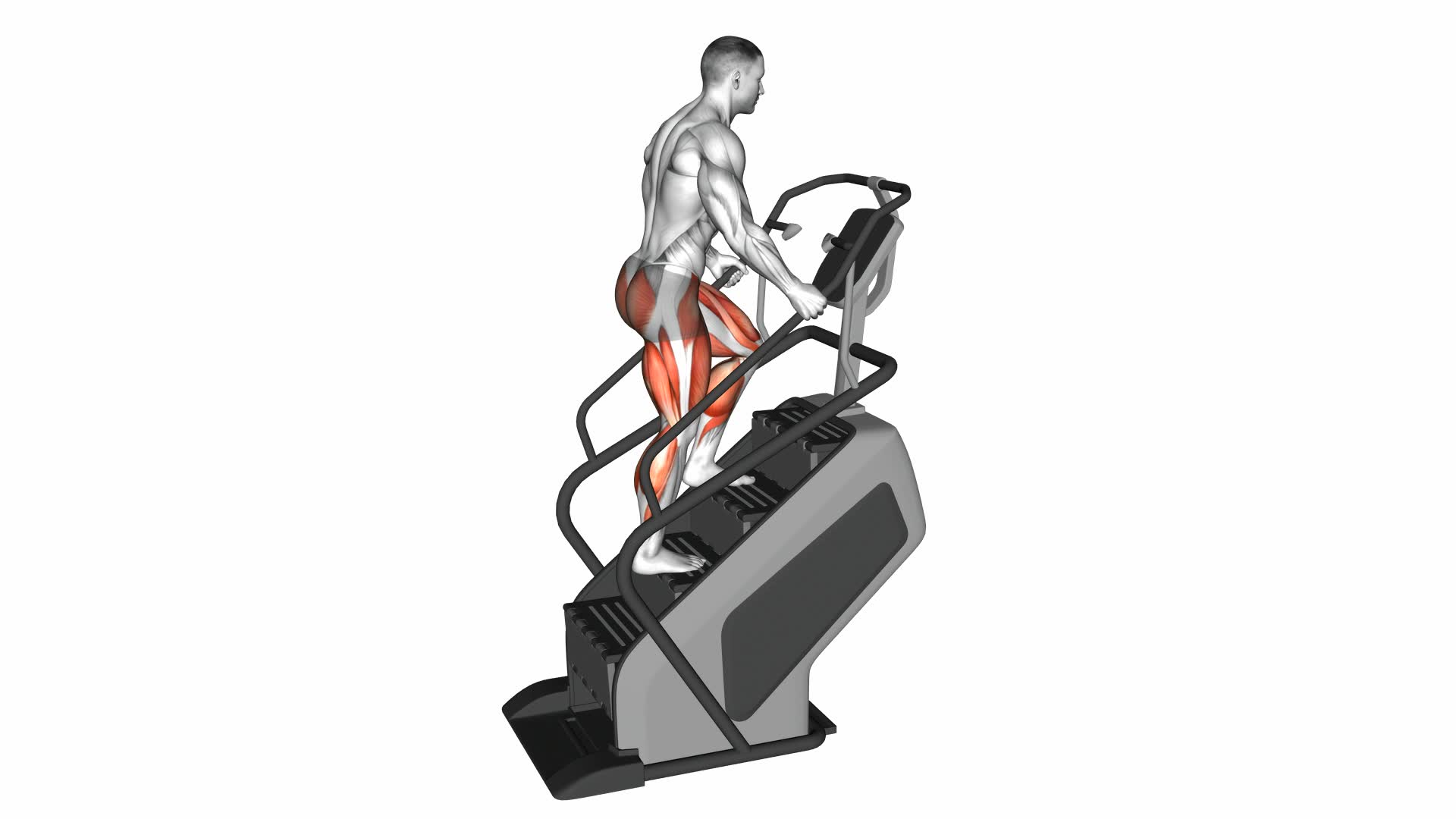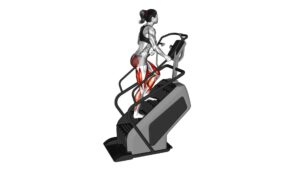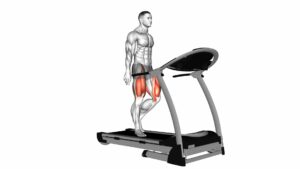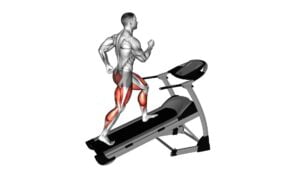Walking on Stepmill – Video Exercise Guide & Tips

Looking to get a killer workout while burning calories? Walking on a stepmill is the perfect exercise for you. With our video exercise guide and helpful tips, you'll learn the benefits of this workout, proper form and technique, and even advanced step variations for those looking to challenge themselves.
Watch This Exercise Video
Improve your stepmill workout with our expert advice and avoid common mistakes. Get ready to step up your fitness game and achieve your goals!
Key Takeaways
- Walking on a stepmill can improve cardiovascular fitness and lower body strength.
- Proper form and technique are important, including maintaining correct body alignment and breathing correctly.
- It is important to avoid common mistakes such as leaning forward or gripping the handrails too tightly.
- Beginners should start slowly and gradually increase intensity, while advanced users can incorporate variations and increase resistance for a more challenging workout.
Benefits of Walking on a Stepmill
Experience the numerous benefits of walking on a stepmill, including increased cardiovascular fitness and improved lower body strength.
Walking on a stepmill is an excellent way to improve your cardiovascular health. As you step on the machine, your heart rate increases, pumping more blood and oxygen throughout your body. This helps strengthen your heart, making it more efficient at delivering oxygen to your muscles.
Additionally, walking on a stepmill can burn calories effectively. The continuous movement of your legs and the resistance provided by the machine help to increase your calorie burn. This makes it a great option for weight loss or maintaining a healthy weight.
Not only does walking on a stepmill help to improve cardiovascular health and burn calories, but it also strengthens your lower body. The constant stepping motion engages your leg muscles, including your quadriceps, hamstrings, and calves. Over time, this can lead to improved lower body strength, making everyday activities easier and reducing the risk of injury.
Proper Form and Technique
To ensure proper form and technique while walking on a stepmill, it's important to focus on correct body alignment. This includes keeping your back straight and shoulders relaxed. Pay attention to your breathing during the exercise, inhaling through your nose and exhaling through your mouth.
Avoid common mistakes like leaning too far forward or gripping the handrails too tightly. These actions can negatively impact your workout effectiveness.
Correct Body Alignment
Are you maintaining proper body alignment while walking on the stepmill? Maintaining correct body posture is essential for maximizing the benefits of your workout and preventing injuries. Here are some tips to help you maintain proper body alignment and balance while using the stepmill:
- Stand tall with your shoulders back and down, and engage your core muscles.
- Keep your head aligned with your spine, looking forward rather than down.
- Maintain a neutral spine by avoiding excessive leaning forward or backward.
- Keep your feet flat on the pedals and distribute your weight evenly.
- Relax your arms and let them swing naturally with each step.
- Engage your glutes and thigh muscles to power your movements.
By following these guidelines, you can ensure that your body is aligned correctly and maintain your balance throughout your stepmill workout.
Now, let's move on to the next topic of breathing during exercise.
Breathing During Exercise
Maintain proper form and technique for breathing during exercise while using the stepmill to optimize your workout and enhance your performance.
Proper breathing is crucial for maximizing the benefits of your workout and preventing fatigue. One important aspect to consider is the importance of hydration. Staying hydrated helps to lubricate your airways, making it easier to breathe and preventing dryness or irritation.
Additionally, deep breathing during exercise can have numerous benefits. It helps to increase oxygen intake, improving endurance and reducing muscle fatigue. Deep breaths also help to engage your core muscles, stabilizing your body and improving balance.
Avoiding Common Mistakes
Make sure you're using the correct form and technique to avoid common mistakes while walking on the stepmill. Proper form and technique are essential for improving posture and preventing injuries. Here are some tips to help you avoid these common mistakes:
- Maintain a tall posture throughout the exercise, with your shoulders back and your core engaged.
- Avoid leaning forward or backward, as this can put strain on your lower back.
- Keep your feet flat on the pedals and avoid lifting your heels.
- Don't grip the handrails too tightly; instead, lightly rest your hands on them for balance.
- Take short, controlled steps and avoid bouncing or jerking movements.
By following these tips, you can ensure that you're using the correct form and technique while walking on the stepmill, which will help improve your posture and prevent injuries.
Now, let's move on to the beginner-friendly step-by-step guide.
Beginner-Friendly Step-by-Step Guide
Are you new to using the stepmill? Before you start, it's important to take some safety precautions as a beginner. This includes starting at a slow pace, using the handrails for support, and wearing proper footwear.
Once you're ready, we'll demonstrate the proper form and technique to ensure you get the most out of your stepmill workout. By following this step-by-step guide, you'll be able to enjoy the benefits of improved cardiovascular fitness, calorie burning, and lower body strength.
Safety Precautions for Beginners
To ensure your safety as a beginner, follow these step-by-step guidelines for using the Stepmill:
- Start Slowly
- Begin with a low intensity level and gradually increase it as you become more comfortable.
- Focus on maintaining proper form and balance throughout the exercise.
- Use the Handrails
- Hold onto the handrails for support and stability, especially when starting out.
- Make sure to keep a firm grip and avoid leaning too heavily on them.
- Wear Proper Footwear
- Choose athletic shoes with good traction and support to prevent slipping and reduce the risk of injury.
- Stay Hydrated
- Drink plenty of water before, during, and after your workout to stay properly hydrated.
- Listen to Your Body
- Pay attention to any discomfort or pain. If something doesn't feel right, stop the exercise and consult a professional.
Proper Form Demonstration
As a beginner using the Stepmill, it's important to demonstrate proper form step by step to ensure a safe and effective workout experience. Here are some tips for beginners to follow when using the Stepmill:
- Start with a warm-up: Begin your Stepmill workout by warming up your muscles with a few minutes of light cardio, such as walking or jogging.
- Maintain a good posture: Stand tall with your shoulders back and core engaged. Avoid slouching or leaning on the handrails for support.
- Step with intention: Place your entire foot on the step and push through your heel as you step up. Avoid bouncing or using momentum to lift your body.
- Use the handrails sparingly: Try to rely on your lower body strength for support and stability. Only use the handrails when necessary for balance.
- Gradually increase intensity: Start with a comfortable pace and gradually increase the speed and resistance level as you become more comfortable and stronger.
By following these tips, you can perform the Stepmill exercise with proper form and reduce the risk of injury.
Now, let's explore the benefits of Stepmill workouts.
Benefits of Stepmill Workouts
To maximize your workout and achieve optimal results, it's important to understand the benefits of Stepmill workouts. Here are some key advantages of incorporating Stepmill workouts into your fitness routine:
- Increased calorie burn: Stepmill workouts are highly effective in burning calories, making it an excellent choice for weight loss and overall cardiovascular fitness.
- Lower impact on joints: Unlike running on a treadmill or outdoor terrain, the Stepmill provides a low-impact workout that reduces stress on your joints while still providing an intense cardiovascular workout.
- Improved lower body strength: Stepmill workouts primarily target your lower body muscles, including your glutes, hamstrings, and calves, helping to tone and strengthen these muscle groups.
- Stepmill workout modifications: The intensity of a Stepmill workout can be easily adjusted by increasing or decreasing the speed and resistance settings, making it suitable for beginners and advanced exercisers alike.
- Step-by-step guide for beginners: Starting with shorter workout durations and gradually increasing the time and intensity will help beginners build endurance and progress towards longer, more challenging workouts.
Advanced Step Variations for a Greater Challenge
Challenge yourself with advanced step variations on the Stepmill to increase the intensity of your workout. These advanced step variations provide a greater challenge and help you maximize the benefits of your Stepmill exercise routine.
One advanced step variation you can try is the high knee march. Instead of simply stepping up and down, lift your knees higher with each step. This engages your core muscles and increases the intensity of the workout.
Another variation is the lateral step, where you step sideways on the Stepmill instead of straight up and down. This targets your inner and outer thighs, providing a different challenge to your muscles.
You can also try stepping with weights to add extra resistance and increase the difficulty of the workout. Holding dumbbells or using ankle weights while stepping will help to tone and strengthen your muscles even more.
By incorporating these advanced step variations into your Stepmill routine, you can take your workout to the next level and continue challenging yourself. These variations won't only increase the intensity, but also add variety to your routine, keeping you motivated and engaged.
Now that you're familiar with advanced step variations on the Stepmill, let's move on to some tips to further improve your stepmill workout.
Tips to Improve Your Stepmill Workout
To enhance your Stepmill workout and maximize your results, consider implementing the following tips:
- Focus on improving endurance:
- Incorporate interval training: Alternate between high-intensity bursts and recovery periods to challenge your cardiovascular system and improve your endurance. For example, climb at a fast pace for 1 minute, then reduce the intensity for 30 seconds.
- Increase resistance gradually: Gradually increase the resistance level on the Stepmill to build strength and endurance. Start with a comfortable level and gradually increase it as you become more comfortable.
- Maximize calorie burn:
- Engage your upper body: Hold onto the handles and actively pump your arms while climbing to engage your upper body muscles and increase calorie burn.
- Vary the speed and intensity: Mix up your Stepmill workout by incorporating periods of high-speed climbing and slower, more controlled movements. This variability challenges your muscles and helps maximize calorie burn.
Common Mistakes to Avoid on the Stepmill
Avoid these common mistakes to get the most out of your Stepmill workout.
- Prioritize safety and maximize calorie burn.
- Overexertion: Resist the temptation to increase speed or resistance too quickly. Gradually increase intensity to avoid injury.
- Improper form: Maintain proper posture, keep back straight, shoulders relaxed, and engage core to prevent strain.
- Avoid relying too heavily on handrails. They provide stability, but excessive use reduces calorie-burning benefits.
- Focus on engaging lower body muscles and maintaining balance without relying on handrails.
Frequently Asked Questions
How Much Weight Can I Expect to Lose by Walking on a Stepmill?
When walking on a stepmill, you may have weight loss expectations. The intensity of your stepmill workout can play a role in how much weight you can expect to lose.
It's important to keep in mind that weight loss is influenced by various factors such as diet, overall activity level, and genetics.
Consulting with a healthcare professional or fitness expert can provide personalized guidance on realistic weight loss goals and the best approach to achieve them.
Can Walking on a Stepmill Help Improve My Cardiovascular Fitness?
Walking on a stepmill can definitely help improve your cardiovascular fitness. It's a great way to increase your endurance and get your heart rate up.
Plus, the calorie burn benefits are a bonus!
By consistently incorporating stepmill workouts into your routine, you'll be able to strengthen your heart and lungs, improve circulation, and boost your overall cardiovascular health.
It's an effective and efficient way to get your heart pumping and achieve your fitness goals.
Is It Safe to Use a Stepmill if I Have Knee or Joint Issues?
If you have knee or joint issues, you may be wondering if using a stepmill is safe for you. The stepmill can be a low impact exercise option for people with knee or joint issues, as it provides a smooth and controlled movement.
However, it's always important to consult with a healthcare professional before starting any new exercise routine. They can provide guidance on whether the stepmill is appropriate for you, and suggest alternative exercises if needed.
How Long Should I Walk on a Stepmill to Achieve Maximum Results?
To achieve maximum results on the stepmill, it's important to find the optimal duration for your workouts. While there's no one-size-fits-all answer, experts recommend aiming for at least 30 minutes of continuous walking on the stepmill. This duration allows you to challenge your cardiovascular system and burn calories effectively.
Additionally, it's recommended to adjust the intensity levels to a moderate to high level, where you feel challenged but still able to maintain proper form and technique.
Can Walking on a Stepmill Help Strengthen My Leg Muscles?
Walking on a stepmill is a great way to strengthen your leg muscles. It can improve your balance and increase your endurance.
By consistently using the stepmill, you can target and engage the muscles in your legs, including your quadriceps, hamstrings, and calves. This low-impact exercise is effective in building strength and toning your legs.
Incorporating the stepmill into your fitness routine can help you achieve your leg muscle goals.
Conclusion
In conclusion, walking on a stepmill offers numerous benefits for your fitness journey. By maintaining proper form and technique, you can maximize the effectiveness of your workout. Whether you're a beginner or looking for a greater challenge, there are advanced step variations available.
Remember to follow the tips provided to improve your stepmill workout and avoid common mistakes. Incorporate this exercise into your routine and enjoy the benefits it brings to your overall health and fitness.

Author
Years ago, the spark of my life’s passion ignited in my mind the moment I stepped into the local gym for the first time. The inaugural bead of perspiration, the initial endeavor, the very first surge of endorphins, and a sense of pride that washed over me post-workout marked the beginning of my deep-seated interest in strength sports, fitness, and sports nutrition. This very curiosity blossomed rapidly into a profound fascination, propelling me to earn a Master’s degree in Physical Education from the Academy of Physical Education in Krakow, followed by a Sports Manager diploma from the Jagiellonian University. My journey of growth led me to gain more specialized qualifications, such as being a certified personal trainer with a focus on sports dietetics, a lifeguard, and an instructor for wellness and corrective gymnastics. Theoretical knowledge paired seamlessly with practical experience, reinforcing my belief that the transformation of individuals under my guidance was also a reflection of my personal growth. This belief holds true even today. Each day, I strive to push the boundaries and explore new realms. These realms gently elevate me to greater heights. The unique combination of passion for my field and the continuous quest for growth fuels my drive to break new ground.







